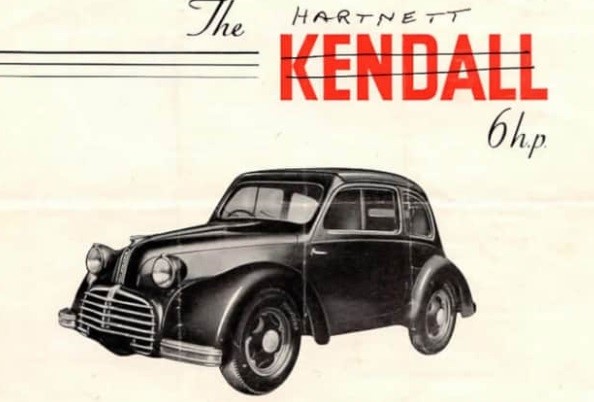

An amazing discovery was made earlier this year when Chris Coates, site manager at the Halton Mill received a phone call from one of his factory workers. It was reported that an unidentified aluminium car chassis has been uncovered in the corner of the scrapyard at the Wicks recycling yard in Cumbria, UK.

What came forward with the unveiling suggested that Lancaster might have had a chance of becoming a car manufacturing area near the end of the World War II.
The journey begins in November 1944, when Denis Kendall, the MP of Grantham announced the idea of a ‘People’s Car’ acquirable for just £100 and an additional £25 tax. This led to the foundation of a new company named Grantham Productions Limited, which he wished to base on the British Manufacturing and Research Company (BMARC) on Springfield Road.
After two failed attempts of building a prototype, Denis Kendall realised it would be better to rely on the AF-G car design that had been put together by Jean-Albert Grégoire for the French manufacturer Aluminium- Français.
Though component production began to take place in various parts of Britain, the assembly was completed in Grantham. But only five to six prototypes of these Kendall-Grégoire were made when suddenly the production was halted due to the withdrawal of an Indian car-enthusiast and funder, Maharaja Jam Sahib of Nawanagar.
However, after great difficulties Kendall met an Englishman by birth living in Australia from 1934 as the Managing Director of Holden, Sir Lawrence J Hartnett. After rigorous plans of setting up a car manufacturing factory in Grantham Lincolnshire failed, Kendall sold his plans to the Hartnett Motor Company, Australia.
It was then that the Luneside Engineering Company in Halton near Lancaster was signed in by the Australian unit to begin assembling the car in Britain.
Anyhow Hartnett went ahead and produced some similar versions of the car in Australia. But for reasons unknown, the Luneside contract also collapsed and not a single trace of the car ever being produced in Lancaster remained.
That was until Chris Coates, site manager at the Halton Mill who was eager to transform the old Luneside Engineering factory into a work and event space, received a waking call from history.
“Out of the blue a worker at the Wicks recycling yard in Kendal rang and said they had found a rather strange car chassis in the corner of the scrapyard they had just taken over, which they thought had been made in Halton. It seems that at least one car was assembled by Luneside Engineering and was removed to the scrapyard once the factory closed down,” he exclaimed.
The aluminium chassis of the Kendall/Hartnett car was on display at Halton Mill as a part of its Heritage Open Day initiative on September 17.



Responses






